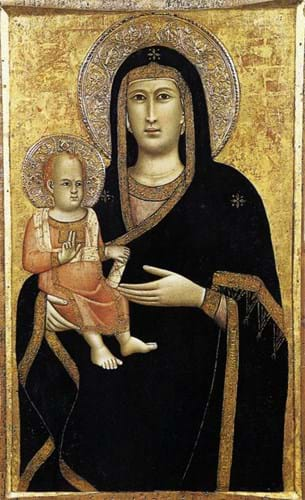
Kathleen Simonis applied to Arts Council England (ACE) in 2015 for an EU export licence to take Madonna and Child from England to the Free Port in Zurich. ACE rejected the application after questions arose over whether the way it left Italy a decade earlier had, retrospectively, become unlawful.
It also believed that it should be Italy, rather than the UK, that should have jurisdiction over its export from the EU.
At the High Court, Mrs Justice Carr upheld the ACE’s decision and rejected Simonis’ case to overturn it.
The oil on wood panel is currently in storage in London and it is not yet clear if Simonis will seek an export licence from Italy or lodge an appeal against the ruling.
Background
Simonis had bought Madonna and Child in 1990 at an auction in Florence for £3500 where it was described as a “panel painting from the 1800s”. However, it was later restored and, after a layer of medieval paint was revealed, it was reassessed as a 13th century work with a possible attribution to Giotto di Bondone (1266-1337).
Although some Italian art experts have contested the attribution (but not the possible dating), it has now been given an estimated value of £10m.
With the picture considered by the Italian authorities to be of exceptional cultural and historical importance, attempts by Simonis to export and re-export the work since the late 1990s have led to a lengthy history of litigation in Italy regarding the painting’s right to leave the country.
It was eventually moved to London in February 2007 after a court in Lazio removed blocks on its export. However, in November 2008, the Consiglio di Stato, the highest Italian administrative court, reversed that decision and then refused an application by Simonis for a review.
“Competent authority”
In the application to re-export the painting to Switzerland in 2015, Simonis asserted an “unfettered right” to move the painting outside the EU under existing EU regulations. She argued that it had been lawfully transported to the UK in 2007 and that the time limit for Italian authorities to recover the work expired in 2014.
ACE concluded that the Consiglio di Stato’s 2008 ruling meant that the painting had not been “lawfully and definitively” dispatched to the UK from Italy and, under EU law, the “competent authority” to now issue such an export licence was the Italian authorities.
It indicated that it would be able to issue an export licence to return the painting to Italy, and it would then be for the Italian Ministry to decide whether or not to grant an export licence to Switzerland.
At the High Court, Justice Carr concluded: “Where to strike the balance between public interest in protecting a nation’s cultural heritage and the private interests of art owners falls pre-eminently within the scope of the Italian authorities’ moral or political judgment.”
The court judgment further states: “As a fact that as a matter of Italian law as at 14th February 2017 the claimant [Simonis] was required to apply and obtain a new certificate of free movement in order to export the painting from Italy to London. She did not do so or obtain one. Accordingly, the dispatch of the Painting on 14th February 2007 was not “lawful” for the purpose of Article 2 [an EU regulation from 1992 on the export of cultural goods].





